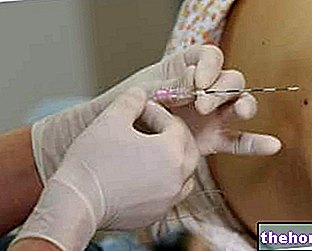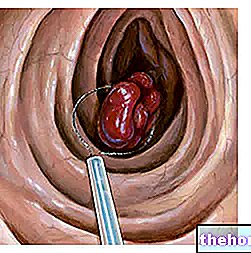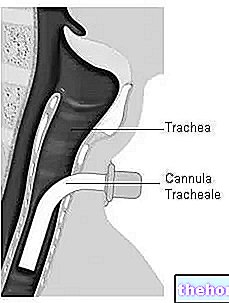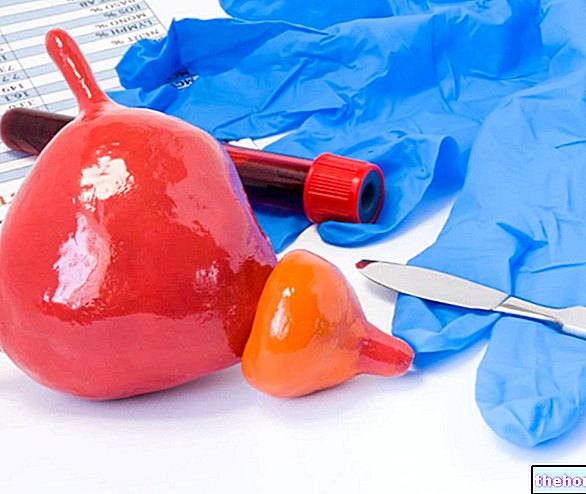Indicated in the presence of severe aortic stenosis or aortic insufficiency, aortic valve replacement requires some preparation.
This surgery can be performed in two ways: "open heart", after thoracotomy, or in a minimally invasive way, using a vascular catheter or a small incision at the intercostal level.
Long-lasting procedure (from 3 to 5 hours), the replacement of the aortic valve is not without risks; however, it must be pointed out that the risk / benefit ratio relating to its implementation is always decidedly in favor of the latter (aortic stenosis and aortic insufficiency are undoubtedly more dangerous than the operation in question).
Heart Valves and Aortic Valve: A Brief Review

Heart valves are the small internal structures of the heart that control the unidirectional passage of blood between atria and ventricles, and between ventricles and efferent vessels.
The aortic valve is the heart valve located between the left ventricle and the aorta, and which regulates the flow from the heart of blood destined to reach the organs and tissues of the body.
The aortic valve consists of three cusps; the cusps of a heart valve are flaps of tissue which, as they move, close and open the valve itself.
What are the causes of aortic valve defects?
Aortic stenosis and aortic insufficiency are the result of anatomical defects in the aortic valve.
These valve defects may be due to congenital conditions (present from birth), such as bicuspid aortic valve or Marfan syndrome, or to acquired conditions (developed over the course of life), such as senile valvular calcification (due to to aging), endocarditis, systemic lupus erythematosus, rheumatic fever, ankylosing spondylitis, etc.
Symptoms Aortic Stenosis and Aortic Insufficiency
Typically, the symptoms of a valve defect such as aortic stenosis or aortic regurgitation only appear when these conditions are at an advanced stage. This feature makes their early diagnosis difficult and consequently reduces the possibility of prompt treatment.
Aortic stenosis and aortic regurgitation tend to cause very similar symptoms, usually including:
- Chest pain and fainting during physical exertion;
- Dyspnea on exertion and sometimes even at rest;
- Extreme fatigue during physical exertion;
- Palpitations or arrhythmia;
- Abnormal noises heard at the stethoscope;
- Poor appetite and failure to gain body weight (in the child).
Replacement or Repair of the Aortic Valve: Selection Criteria
The choice between replacing or repairing the aortic valve basically depends on three factors:
- The severity of the valve defect;
- The age and state of health of the patient;
- The need for other cardiac surgery, such as coronary artery bypass grafting.
Typically, aortic valve repair is the procedure of first choice because it presents a lower risk of side effects and a simpler post-operative course.
However, for its implementation, specific conditions are required, such as the presence of a not particularly severe valve defect.
In choosing between replacement or repair, cardiac surgeons evaluate the individual characteristics of the patient, and the risks and benefits of the individual techniques.
. In the context in question, information regarding any medications taken regularly and any allergies to sedative or anesthetic drugs are particularly important;The preoperative checks listed above are important for at least two reasons:
- Because they reduce the risk of complications during surgery (the knowledge of some particularities of the patient allows the attending physician to take countermeasures ad hoc, which avoid unpleasant inconveniences);
- Because they ascertain the patient's suitability for the procedure.
Preoperative Fasting
On the day of the aortic valve replacement / repair operation, the patient must have fasted for at least 8 hours, which means that if the operation is scheduled in the morning, the last meal allowed is dinner the previous day.
This fasting concerns food and also liquids (N.B: it could be allowed to drink water two / three hours after the operation; however, it is advisable to inquire about this possibility with the attending physician).
What to bring to the hospital
Following the surgery to replace / repair the aortic valve, a few days of hospitalization are expected; in light of this, it is advisable for the patient to bring with him various changes of clothing and underwear, and, if used, the medical devices such as hearing aid etc.
Stop smoking
In view of a procedure such as aortic valve replacement / repair, smoking patients should stop smoking; the assumption of this behavior, in fact, reduces the risk of complications during the operation and allows the healing of any surgical incisions to proceed in the best possible way.
during the operation.
Surgical Techniques

Currently, there are two surgical techniques to perform aortic valve replacement / repair: the classical surgical technique and the minimally invasive surgical technique.
It should be noted immediately that, while the replacement surgery lends itself well to both the classic surgical technique and the minimally invasive one, the repair one is better suited to the classic surgical technique.
Aortic Valve Replacement / Repair with Classic Surgical Technique
- The classic surgical technique involves opening the chest (thoracotomy or sternotomy) in order to access the heart.
To open the chest, the surgeon makes a 25 cm incision at the level of the sternum. - Once the thoracotomy has been completed, the operating doctor isolates the heart from the flow of blood that constantly passes through it, using the so-called heart-lung machine.
Connected to the afferent and efferent blood vessels of the heart from the inside of the latter, the heart-lung machine replaces the pump function performed by the cardiac organ for the entire duration of the operation. - After connecting to the heart-lung machine, the surgeon administers some drugs to the patient that temporarily block cardiac activity.
These drugs and the previous isolation of the heart from the bloodstream allow the doctor who operates to intervene on the heart organ with greater freedom. - Once the heart stops beating, the surgeon replaces (or repairs) the heart valve.
The replacement involves the removal of the original and defective valve, and the insertion of a similar element, with a similar function, through the application of a few stitches.
The repair, on the other hand, involves an "adjustment of the anomalous valve component or components; - At the end of the replacement / repair work, the operating doctor restarts the heart by transmitting appropriate electrical discharges and disconnects the patient from the heart-lung machine.
- The operation starts at the final stage: after the heart has broken down, the surgeon closes the chest and applies dissolvable sutures to it, to promote healing.

Minimally Invasive Aortic Valve Replacement / Repair
The replacement / repair of the aortic valve with a minimally invasive technique includes two modes of intervention:
- Through the use of a catheter inserted in a peripheral artery and then conducted to the heart (replacement / repair of the transcatheter aortic valve or TAVI);
- By minithoracotomy (small incostal incision).

Recently conceived, the first procedure avoids any type of incision: the surgeon, in fact, performs the replacement / repair work by means of a catheter on which the replacement element has been installed and which leads to the heart after having introduced it into a " peripheral artery (usually in the leg).
This mode of intervention also avoids the use of the heart-lung machine.
The second procedure, on the other hand, involves access to the heart through a 5 cm incision that the operating surgeon makes at the intercostal level.
During this type of procedure, to replace / repair the aortic valve, the operating doctor uses a surgical instrument through which he is able to reach the left ventricle of the heart and act on the defective valve.

For obvious reasons, minimally invasive procedures are becoming increasingly popular, as they involve shorter operations, reduced blood loss, shorter recovery times and less evident or absent post-operative scars.
Aortic Valve Replacement: Types of Prosthetic Valves
There are two broad categories of prosthetic heart valves, valid for aortic valve replacement surgery; these are:
- Artificial (or mechanical) heart valves. They are prostheses in pyrolytic carbon, a very special material.
- Benefits: remarkable resistance and long life. Recommended for younger patients.
- Disadvantages: blood clots may form on their surface; such clots could give rise to a stroke (see chapter dedicated to risks).
- Biological heart valves (or bioprostheses or tissue valves). Generally, they consist of animal tissue, namely from bovine, equine or pig pericardium; however, there are also human heart valves from cadavers.
- Benefits: lower risk of forming dangerous blood clots.
- Disadvantages: they are less durable, therefore they are less suitable for younger patients.
The prosthetic heart valves are surrounded by a ring of tissue; this ring of tissue is where the surgeon applies the sutures that connect the new heart valve to the heart.
Aortic Valve Repair: Types of Surgery
Depending on your needs, repairing a damaged aortic valve may consist of:
- Reinforcement of the valve, through the application around it of a ring or a band (annuloplasty);
- Insertion of tissue to patch holes or lacerations in the valve flaps (or cusps) (the flaps, or cusps, are the structures that close the valve);
- Separation of abnormally fused portions (e.g. fused cusps);
- Remodeling, restoration or replacement of the valve cusps, i.e. the structures that allow adequate closure of the valve.
Repair with Ozaki Technique
Recently, in Europe, including Italy, repairs with the Ozaki technique are increasingly widespread.
Developed by a Japanese heart surgeon named Shigeyuki Ozaki, this technique is indicated when a restoration or replacement of the valve cusps is required.
The peculiarity of the Ozaki technique is that it involves the creation of new valve cusps with the pericardium of the same patient and their grafting in place of the original ones, which are defective.
Aortic Valve Replacement / Repair: How Long Does It Last?
The replacement of the aortic valve or its repair is an operation that can last from 3 to 5 hours, therefore very long.
The most time-consuming operations are the "open heart" ones.
After the most critical days of the post-operative phase, the patient is ready for his transfer to a normal hospital ward, where, obviously, he continues to monitor his health conditions.
As the days pass, the patient gradually becomes more autonomous; can and should stand up, and take short walks; in some cases, the operating physician recommends a cardiac rehabilitation program.
Aortic Valve Replacement: Recovery Times
On the occasion of a replacement or repair operation of the aortic valve performed with the classic surgical technique, the following are required:
- 6 to 8 weeks for a moderate healing of the surgical incision on the chest e
- From 2 to 3 months to no longer feel pain in the sternal area and consider the wound completely healed.
As already mentioned, the recovery times after operations with less invasive techniques are much shorter.
Aortic Valve Replacement and Return to Daily Life
After a surgery to replace / repair the aortic valve, the resumption of more classic daily activities must take place gradually, without haste:
- At least for the first 6 weeks, it is good to avoid driving and lifting objects heavier than 4-4.5 kg;
- For the first 4-6 weeks, it is best to avoid sexual activity;
- It is advisable to abstain from work for at least 6-8 weeks, in the case of light jobs, and for 3 months, in the case of physically very heavy occupations;
- It is advisable to abstain from sporting activities for at least 3 months from the end of the intervention.
To prevent the problem of infections, the attending physician usually schedules post-operative antibiotic prophylaxis.
To reduce this risk, anticoagulant therapy is essential, which the patient will have to follow for the rest of his life.
Stroke represents a medical emergency that requires immediate treatment.
Did you know that ...
After aortic valve replacement surgery, the risk of complications is greater in older people.




.jpg)











.jpg)











